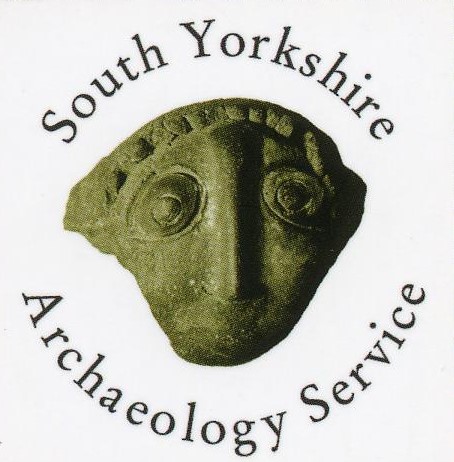Holme Head Wheel (Rivelin Waterpower Sites)
Location/Address
300m downstream of Glen Bridge, Rivelin Valley Road, Sheffield S6 5PN
Type
Other site, structure or landscape
Assets that cannot fit any of the other categories. This category includes sites of archaeological interest, where the original form and function may not be apparent without the use of archaeological techniques and interpretation.
Description
Former water-powered grinding Wheel and water management system. One of the Rivelin Waterpower Sites.
Holme Head Wheel and associated water management system are the remains of a water-powered site that dates from the 1740s and was used for grinding (mainly knives and razors). The building was disused by 1936 and subsequently demolished, but now Holme Head Wheel is one of only a few of the sites along the Rivelin valley where substantial remains of the building layout, with wheel pit and wheel spindle, can be seen. An archaeological excavation in 2009 by the Department of Archaeology at the University of Sheffield found many broken knife blade blanks here.
The water management system extends to the north-east and south-west of the site of the former mill buildings, feeding from and into the adjacent river. There is a steep stone weir. The mill dam is quite large and mostly overgrown, although still holds water. The tail goit runs in a culvert beneath the path before emerging into the river just above the modern stepping stones, initially separated from the river by edge-set slabs joined by wrought-iron straps, one of only three sites in the valley that had this arrangement.
Holme Head Wheel is situated on the south-east side of the river, between Glen Bridge (at the “S”-bend on Rivelin Valley Road) and Roscoe Bridge. The site is owned by Sheffield City Council and there is open access. A public footpath (the Rivelin nature and heritage trail) passes the site and runs along the dam wall. The trail can be accessed from various points along Rivelin Valley Road, or from the north (Stannington) side of the valley.
A marker post installed at the site by Rivelin Valley Conservation Group gives a brief history and links to a website where further information and pictures can be found. An information board with pictures explains the history of the site.
Holme Head Wheel is one of the 20 water-powered mills built in the Rivelin Valley. This sequence of Rivelin mills and mill dams forms an essential part of Sheffield’s heritage. They also have a broader national and even international significance in relation to the history of the Industrial Revolution in Sheffield.
Further information and pictures of Holme Head Wheel and other sites in the Rivelin valley can be found at https://rivelinvalley.org.uk/rivelin-trails-2/. See also the books ‘Walking the Rivelin’, by Sue Shaw and Keith Kendall (6th edition, 2019, Rivelin Valley Conservation Group) and ‘Water Power on the Sheffield Rivers’, by C. Ball, D. Crossley, N. Flavell (Editors), (2nd Edition (2006), South Yorkshire Industrial Society).
Statement of Significance
Age
Dates from the 1740s (or possibly earlier). The building was disused by 1936 and subsequently demolished.Rarity
This asset is an integral part of an especially rare system of waterpowered sites, described in more detail in the Rivelin Waterpower Sites asset. One of only a few of the sites along the Rivelin valley where substantial remains of the building layout, with wheel pit and wheel spindle, can be seen. One of only three sites in the valley where the tail goit is initially separated from the river by edge-set slabs to lengthen the tail goit to allow the river to fall to the level of the goit.Architectural and Artistic Interest
This site is one of a group that collectively and individually demonstrate the construction techniques and interrelationships of waterpowered sites, described in more detail in the Rivelin Waterpower Sites asset. One of only a few of the sites along the Rivelin valley where substantial remains of the building layout, with wheel pit and wheel spindle, can be seen. The wheel was set at a low level, the base of the pit lower than the river. The tail goit is initially separated from the river by edge-set slabs to lengthen the tail goit to allow the river to fall to the level of the goit.Group Value
This site contributes to the significance of the Rivelin Waterpower Sites asset and to the waterpower sites on other rivers in the city, and is integral to an understanding of the role and impact of waterpower in Sheffield.Historic Interest
This site is of historic interest in its illustration of the uses of waterpower, central to the reputation fame and identity of Sheffield; the many and varied uses for waterpower; the industrial development of the area; the impact of communications and topography; the lives and trades of working people; and the practice and policy of landowners, This is described in more detail in the Rivelin Waterpower Sites asset.Archaeological Interest
○ This site has the potential for underground remains that with further investigation could reveal their development over time, including changes of use and the evolution of industrial processes and construction techniques. Because the sites were not overtaken by later industrial development, any remains are likely to be relatively intact. An archaeological excavation in 2009 by the Department of Archaeology at the University of Sheffield found many broken knife blade blanks here.Landmark Status
The Rivelin Valley is an extremely popular leisure destination for local people, largely defined by its waterpower remains, including this site.Images and Documents
Date Listed
15 Aug 2022
Last Updated
19 Apr 2022
Comments and Feedback
Do you have any questions or more information about this record?



%20resized.JPG)

.JPG)
